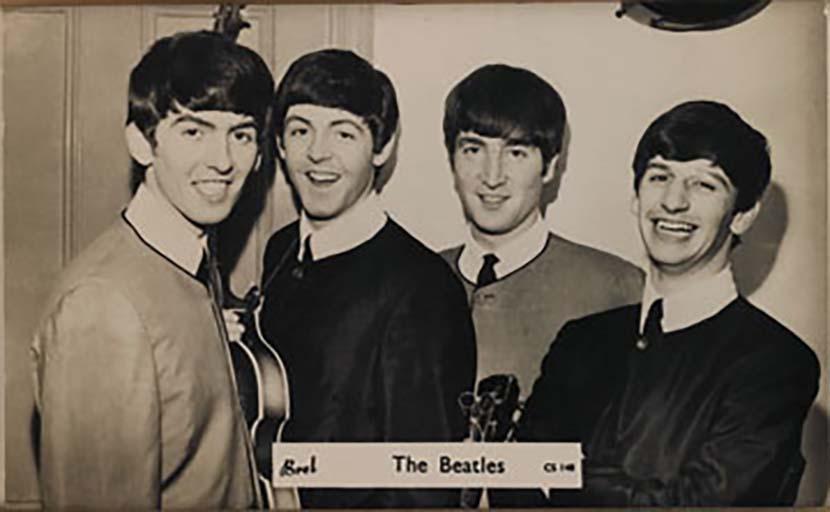The iconic fashion of The Beatles | In focus
From made-to-measure suits and moptops, to psychedelic suits - style was critical in the success of The Beatles.

Nowhere is the importance of image and visual styling more apparent than in the development of Liverpool's most famous pop group of all time. The Beatles' adoption of their famous 'straight cut', collar-length moptop haircuts became a central strand in establishing the group's particular public image. Reminiscent of styles already popular amongst French youth and of the German artistic scene they had come into contact with in Hamburg, the Beatles' hairstyles gave the band the air of being at the leading edge of European fashion. It also differentiated them from the US styles that many British pop acts were emulating at the time. Indeed, it was in the US that the 'moptop' made most impact. When the American media talked about the band, much was regularly made of the length of their hair.
Another crucial aspect in the initial marketing of the Beatles was their manager Brian Epstein's famous decision to dress the band in matching made-to-measure suits. Previously the band had gone through a number of visual styles that showed the influence of American rock 'n' roll, including the Gene Vincent leather look. In itself, Epstein's decision was hardly innovative. Dressing pop acts in matching suits was an established practice in the UK pop industry and amongst black American vocal groups. Indeed, the band's suits were eventually made by one of the most well-known tailors in the UK entertainment industry. Dougie Millings had previously made outfits for British pop stars such as Cliff Richard, Adam Faith and Marty Wilde and American stars including the Four Tops, Buddy Holly and the Temptations.
Clearly, the main aim of changing the band's image was to make them appear more professional to prospective recording companies. The band's first suited photographs in 1961 (taken by Liverpool wedding photographer Albert Marrion) saw them dressed in traditional single-breasted suits with white shirts and black ties, outfits almost identical to those worn by the most successful British pop group of the time, the Shadows. Alongside this, however, was the distinctive European chic suggested by the band's hair, and this was re-enforced in the most famous of Milling's creations, the grey collarless suit. Modeled on the high fashion styling of a suit first produced in 1960 by the Paris designer Pierre Cardin, the collarless suits became an equally iconic element of the band's visual style.
As the Beatles's music changed and developed, the group's image was adapted to create a visual fit with the new sounds, production techniques and lyrical themes they were beginning to incorporate into their work. In a deliberate move away from the uniformity of the early image, the Beatles appeared in their first 1967 official photoshoot individually styled, sporting facial hair and differently coloured styles of jackets, scarves and trousers. The shoot was also the first time John Lennon's round spectacles were featured in publicity material. The band's psychedelic period was part of a response to wider cultural trends in fashion, visual art, and graphic design.
Psychedelia was a movement across various art forms that drew inspiration from a varied mix of sources, among them non-Western culture from places such as India and Tibet, fin de cycle Art Nouveau, Victoriana and circus imagery. Psychedelic art also clearly mirrored the experience induced by drugs such as LSD, from the swirling kaleidoscopic patterns of posters, paintings and album covers to the feedback, phasing and echoes common within psychedelic music. Psychedelia's variety of sources and styles found a direct parallel in the Beatles' musical eclecticism from the mid-1960s onwards, seen in their use of heavily effected sounds, Eastern intervals and instruments, in techniques they borrowed from the classical avant-garde such as tape looping, and in the incorporation of non-musical elements into their recordings.
The Beatles' visual style at this time, from their shoulder length hair to their brightly coloured 'Sgt Pepper' suits, provided a strong fit with this musical direction, and it continues to be important to the iconic status of the band even today.
